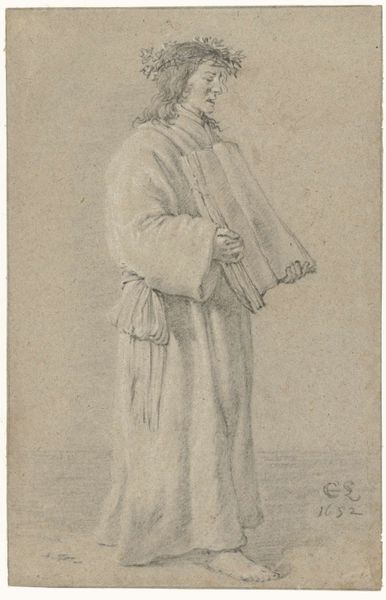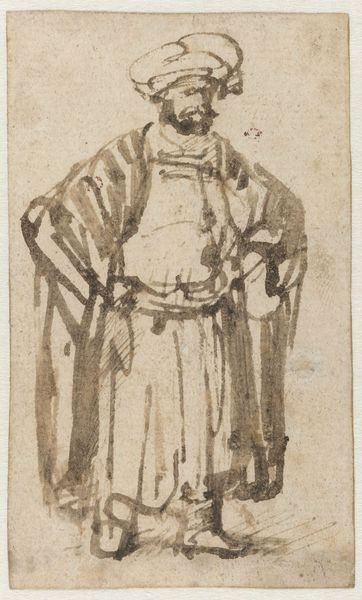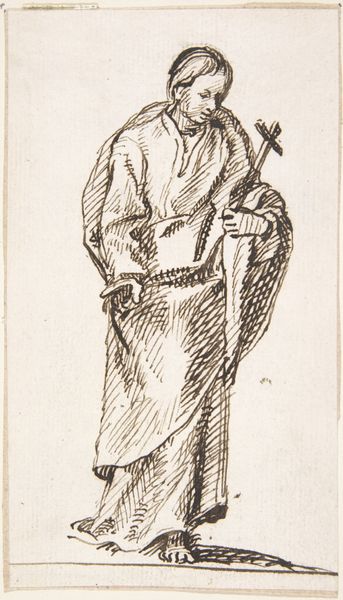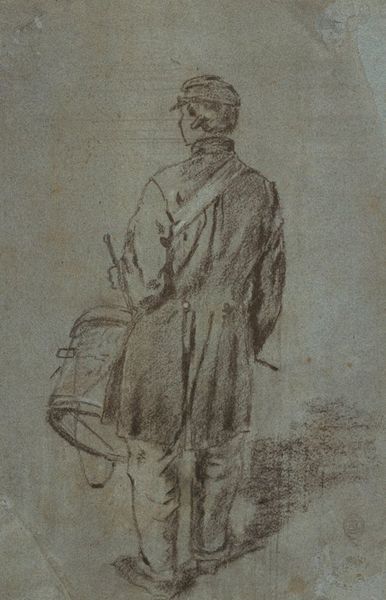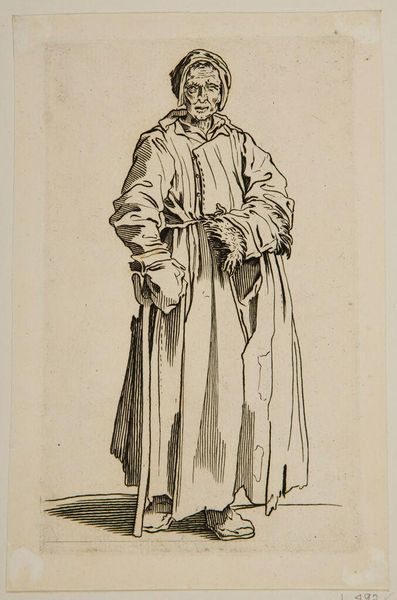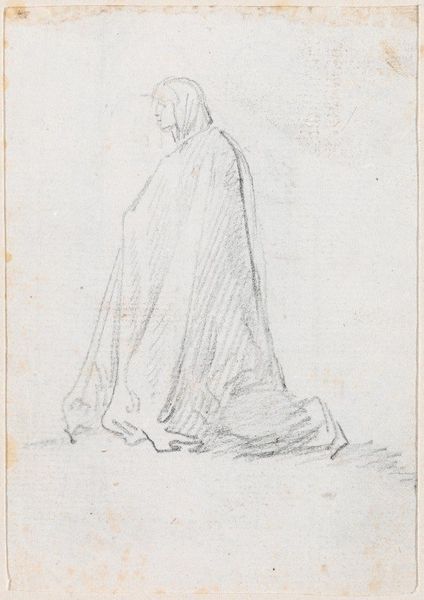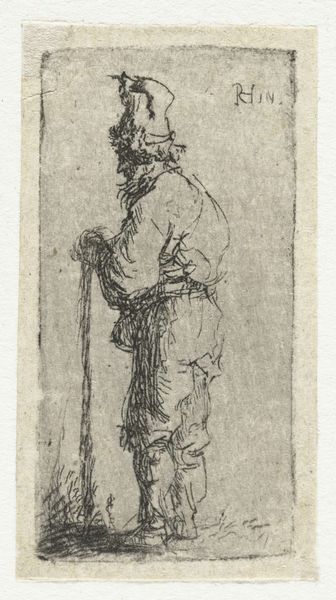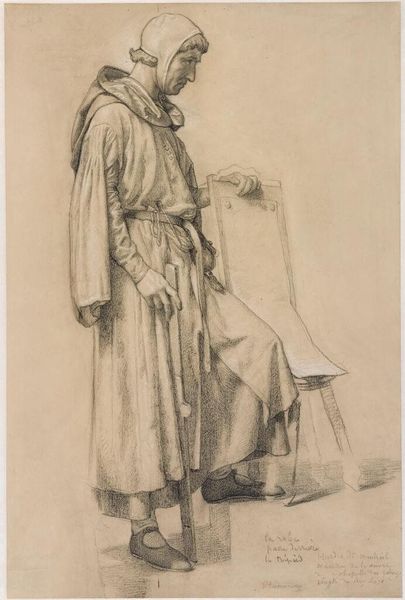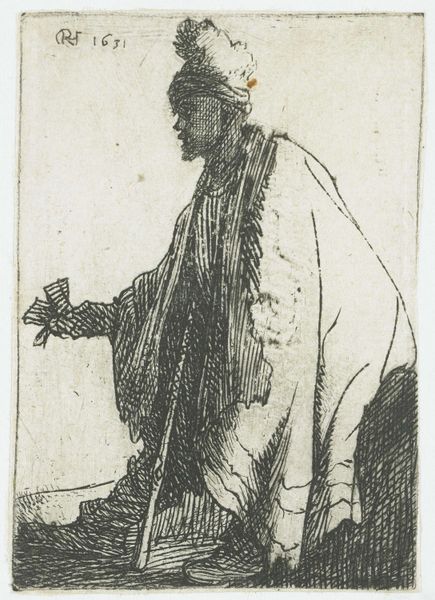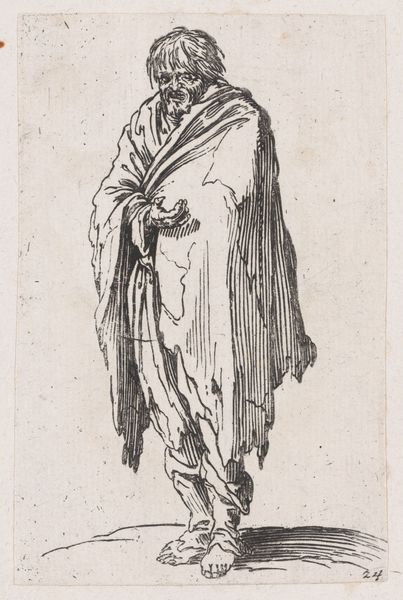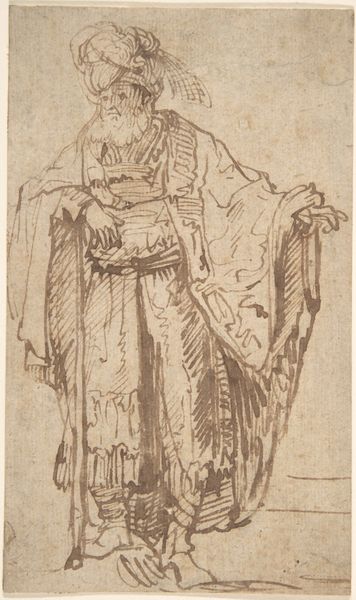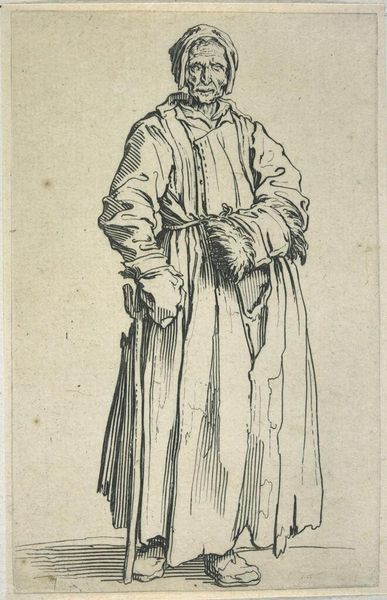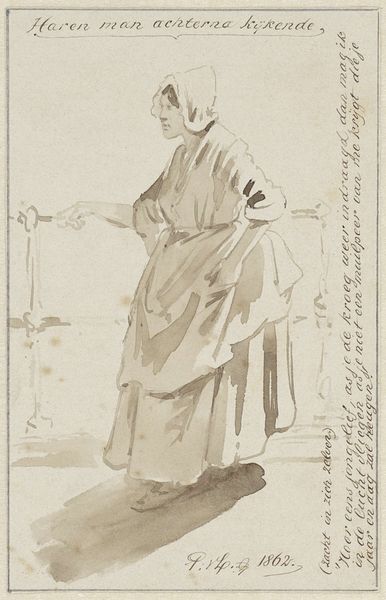
An Old Man in Oriental Dress, Standing by a Pagan Altar mid-18th–early 19th century
0:00
0:00
drawing, ink
#
portrait
#
drawing
#
ink
#
ink drawing experimentation
#
orientalism
#
portrait drawing
#
genre-painting
#
rococo
Copyright: Public Domain: Artvee
Curator: Giovanni Domenico Tiepolo created this ink drawing, entitled "An Old Man in Oriental Dress, Standing by a Pagan Altar," sometime between the mid-18th and early 19th century. It immediately strikes me as melancholic. Editor: Yes, the sepia tones certainly lend a somber feel. I see the figure draped in what looks like orientalist garb. Given Tiepolo's context, I wonder about the politics of representation at play here, this image partaking in an imagined East that European powers were then actively colonizing. The romanticized yet exoticized "other". Curator: Absolutely. We must consider that. The theatricality, that dramatic lighting, that pose. How does this relate to the then widespread power dynamics and colonial gaze? I note his relaxed pose; almost arrogant and powerful with that staff, but the eyes are sorrowful, burdened by an unfamiliar place, if he is even truly “Oriental.” And that altar. What do we read of the loss of one’s religion in the context of other faiths rising to overtake pagan ones in Europe? Editor: It raises such intriguing questions. The museum clearly highlights its status as Rococo, an era characterized by decorative elegance. However, such orientalist works provided not only ornamentation, but functioned as justifications for power imbalances that promoted western ideology while actively exoticizing—if not entirely subjugating—Eastern communities. In a sense, his pose mimics, satirizes, maybe even subtly critiques these power dynamics while, simultaneously, he may be complicit in propagating them through that same representation. Curator: And let’s delve a bit into the choice of medium, ink on paper, almost like a spontaneous notation of fleeting impressions, quick decisions of self-perception against those imbalanced societal expectations. I'm also keen to unpack that "pagan altar." It signifies a turning away from established norms but, from a European perspective at the time, “pagan” connoted something barbaric or unenlightened, and the fact that he places the Oriental Man next to the said symbol could have signified otherness, uncivilized ideologies against their western counterpoints, furthering these tropes and stereotypes in service of western audiences.. Editor: That point is key: these exotic characters circulated for *whom*? Who possessed the power to interpret, and benefit from, those readings? Museums at the time, spaces still often viewed with an authority beyond approach, also became significant tools in this colonial theater. Displaying artwork like this one reinforced narratives regarding a "superior" Western culture. Curator: Exactly, museums were as crucial in constructing those power dynamics. To critically view the art then, as now, requires considering all contexts, asking “for whose benefit,” to recognize art history is irrevocably interwoven with politics and sociocultural elements of both eras in art history—the production and interpretation. Thank you, the socio-political implications of this art work are more powerful that its visual aesthetics.. Editor: Indeed, the piece provides valuable insight into understanding visual politics, Orientalism, and western social constructs of the period. Thank you.
Comments
No comments
Be the first to comment and join the conversation on the ultimate creative platform.
